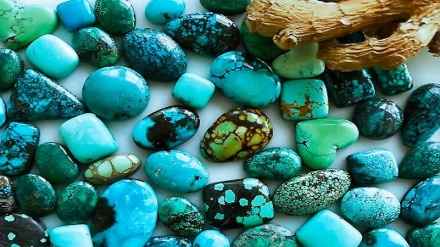Iranian Market (43)
Welcome to another episode of the Iranian Market. In this episode, we’re going to continue discussing Iran’s medicinal herbs.
The land of Iran, due to being in a special geographical location, enjoys one of the richest genetic and biological resources of the world, especially in the field of medicinal herbs.
Today we introduce three rare herbs of Iran, namely Echium Amoenom, Lilium Ledebourii and Heradeum Persicum.
In the past, the profession of selling medicinal herbs was of high significance in Iran’s markets. Those who sold medicinal herbs were influential and relaible people who were familiar with the health effects of herbs as well as the essence and fragrance of flowers.
They used to give patients the medicines that traditional physicians or Hakims had prescribed. They were also cable of treating some of the diseases with herbs based on the knowledge and experience they had gained from their ancestors.
Herbal therapy has been one of the medical methods the Hakims used for treating patients.
The basic materials of medicines were collected by a group of people who toured to mountains and meadows to pick up herbs.
Today, despite the ample use of chemical drugs, the use of herbal medicines is on the rise and a remarkable share of the world’s trade has been allocated to the revenues of medicinal herbs.
According to the figures of World Health Organization (WHO), about 80% of the world people, particularly those in poor remote areas and developing countries, fulfill their medical needs by herbal medicines.
Because of the outstanding presence of herbal medicines in the life of many people, herbalists believe that the twenty- first century is the century of return of herbal medicines to the medicinal market.
In the civilized countries of the ancient world, different territories like Iran, China, Egypt, and Greece were the origin of many healing methods. The one- thousand-year life of Iran’s traditional medicine has witnessed a big list of prominent physicians including Jorjani, Raazi, Abu Reyhan Birouni and Ibn Sina. Methods like cupping, dry cupping, leech therapy and phlebotomy were among the well-known methods of treatment in Iranian traditional medicine.
There are thousands of herbal species in Iran which hundreds of them are exclusively native to Iran. One of these herbs is Iranian Echium Amoenom or Gol Gaav Zaban. This herb, that grows on the feet of Alborz mountains, has plenty of health effects. The flower, the leaves, the stem and the roots of this herb are all used for extracting gel and mucilage which are used in the production of food and drugs.
The Iranian Echium Amoenom is energetic and is used for treatment of some diseases.
Echium Amoenum cleanses the blood, calms the nerves, invigorates the kidneys and its brew is helpful for cold, inflammation of the chest and coughing. This herb is also beneficial for heart.
The Iranian Echium Amoenom has got appropriate markets domestically and internationally. Every year, about 50 tons of this herbs is exported to European and American countries as well as to the Persian Gulf littoral states.
Lilium Ledebourii flower which is called Sousan-e Chel Cheraagh in Farsi is another Iranian rare plant.
Lilium ledebourii is a persistent herbaceous plant that grows 50–150 centimeters high. The yellow bulbs are oval and reach a diameter of 5–7 centimeters; they are highly segmented, and the scales are lance-shaped. The stem is strong and straight. The leaves stand upright, and have fine hair on the edge. They are linear or lance-shaped. They are 10–14 centimeters long, and 1–2 centimeters wide.
This rare plant grows in some parts of Gilan, Mazandaran, and Ardebil provinces.
The export of this herb is forbidden because of the danger of extinction.
Heradeum Persicum or Golpar is another unique Iranian medicinal herb which is exclusively native to Iran.
The seeds are used as a spice in the Iranian cuisine. The very thin, small seed pods are aromatic and slightly bitter. They are usually sold in powder form.
Golpar can be used in small amounts when cooking beans to reduce the effect of gas in the digestive tract.
AE/RM/SS


